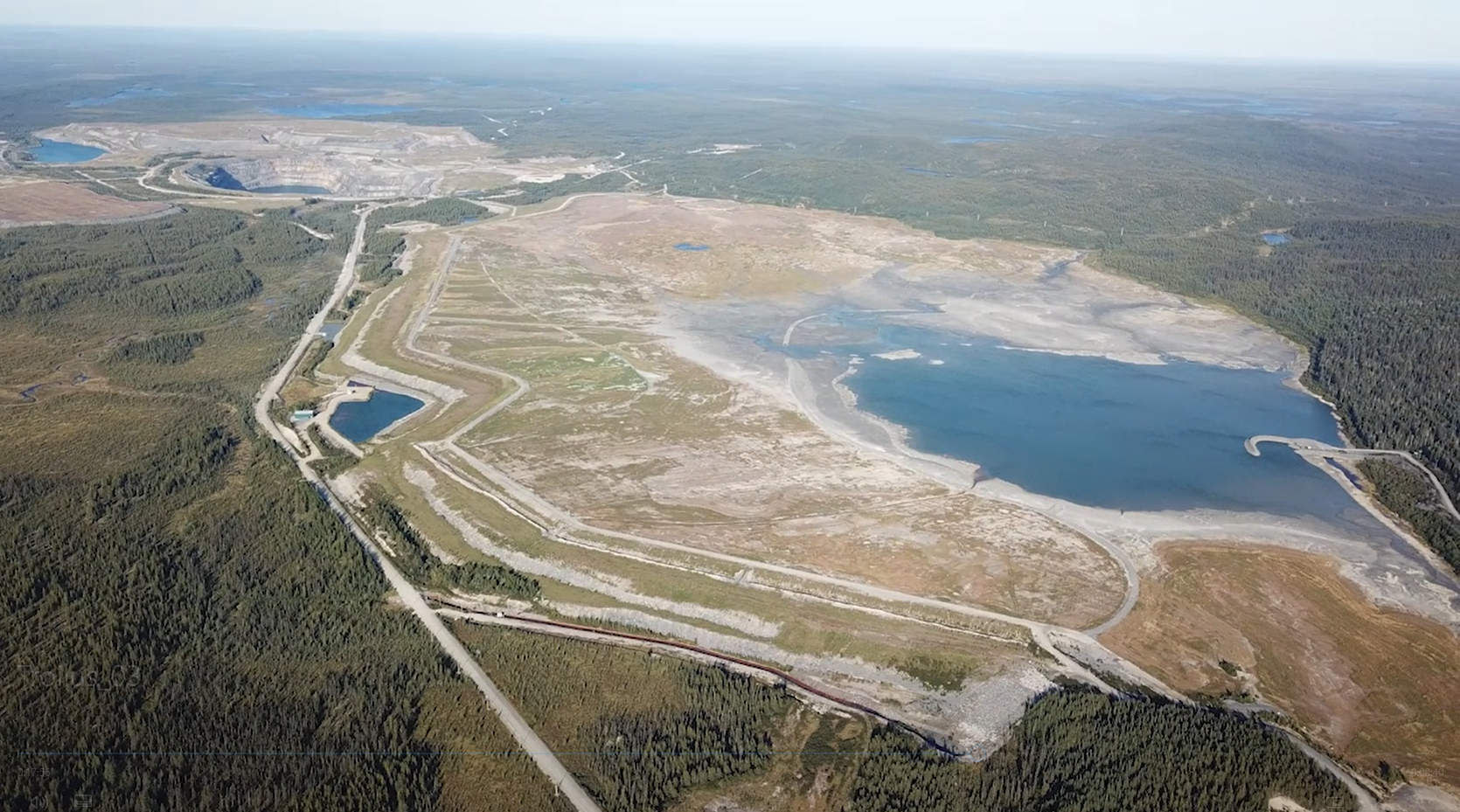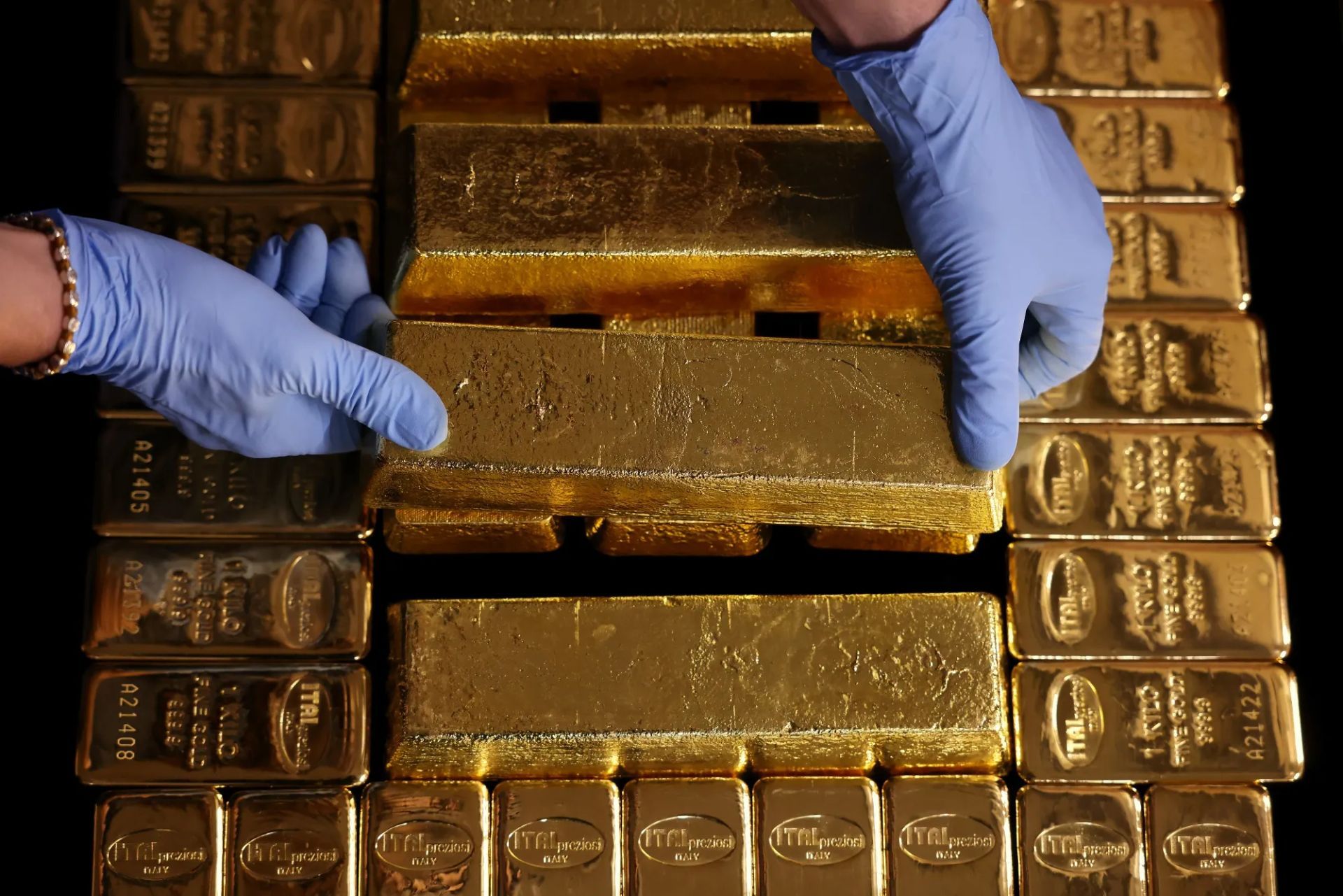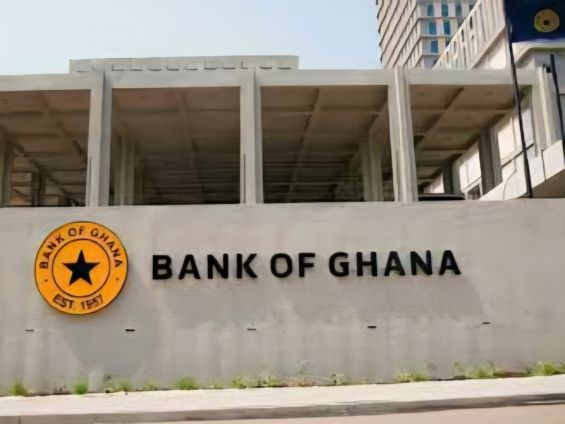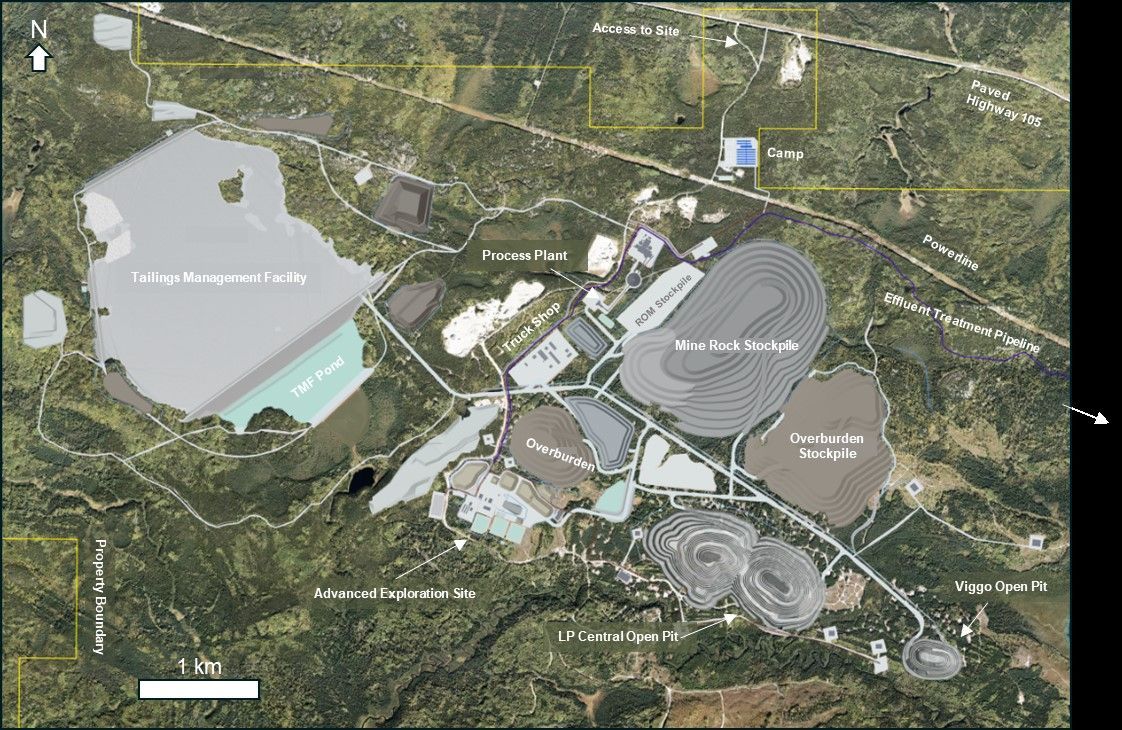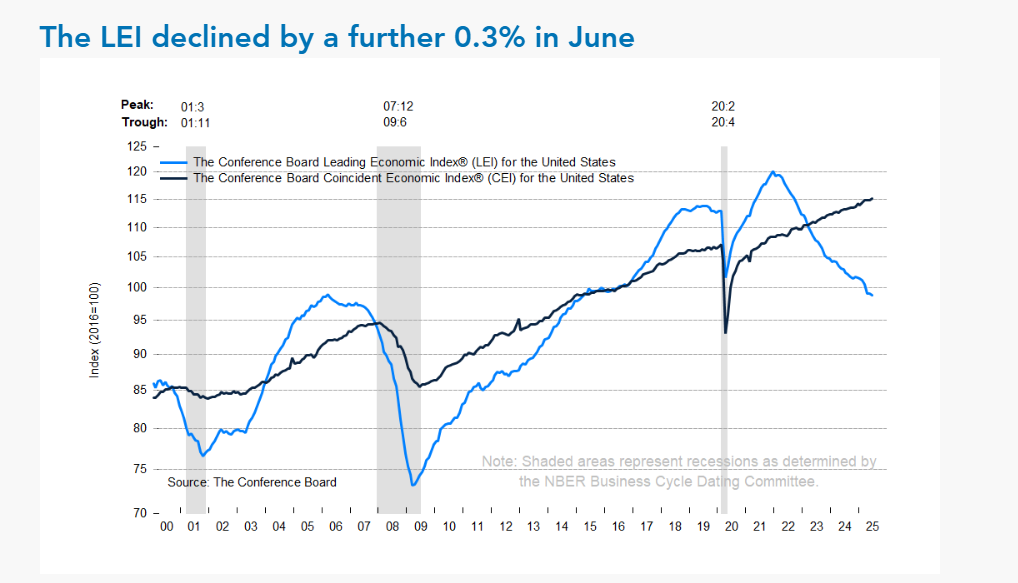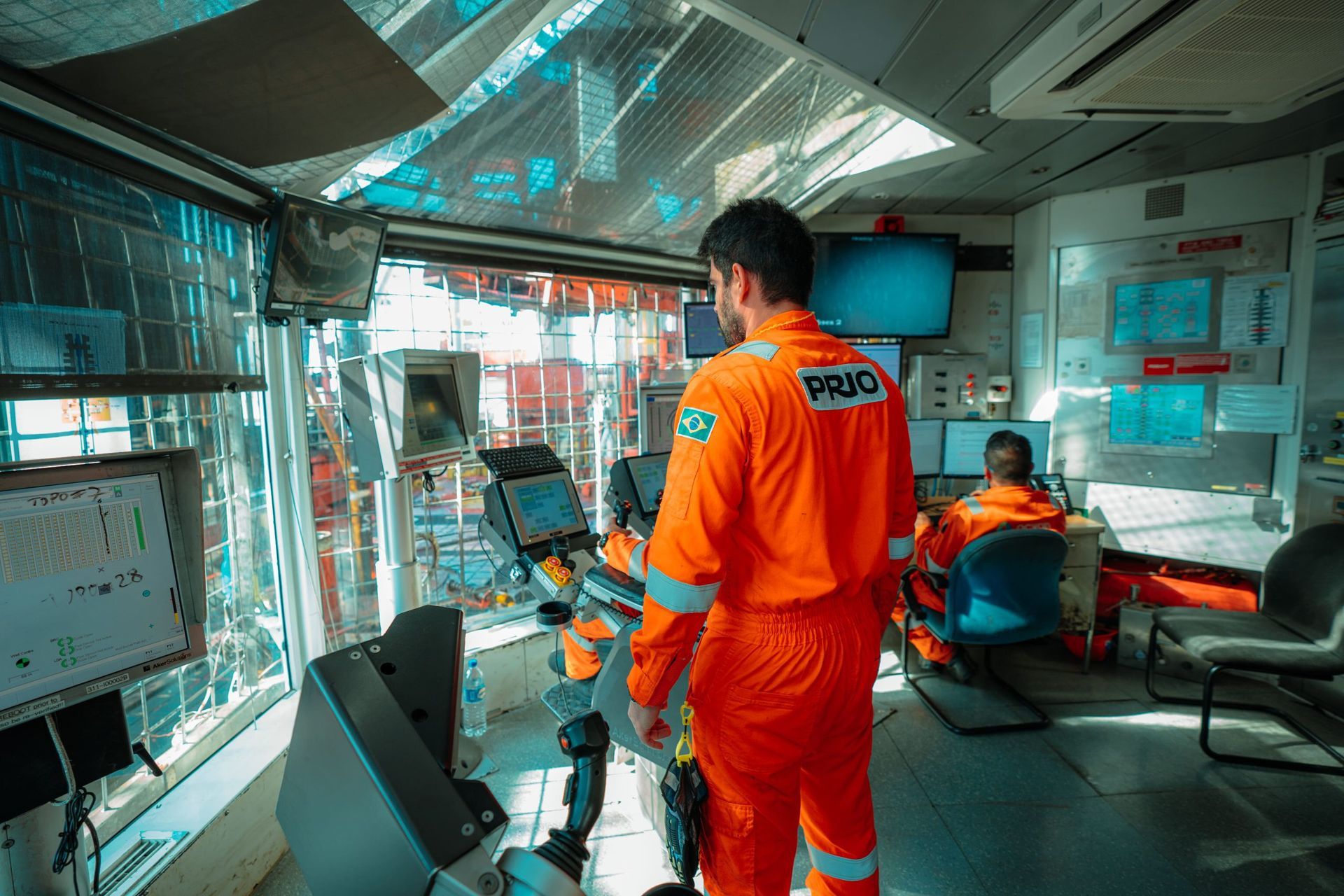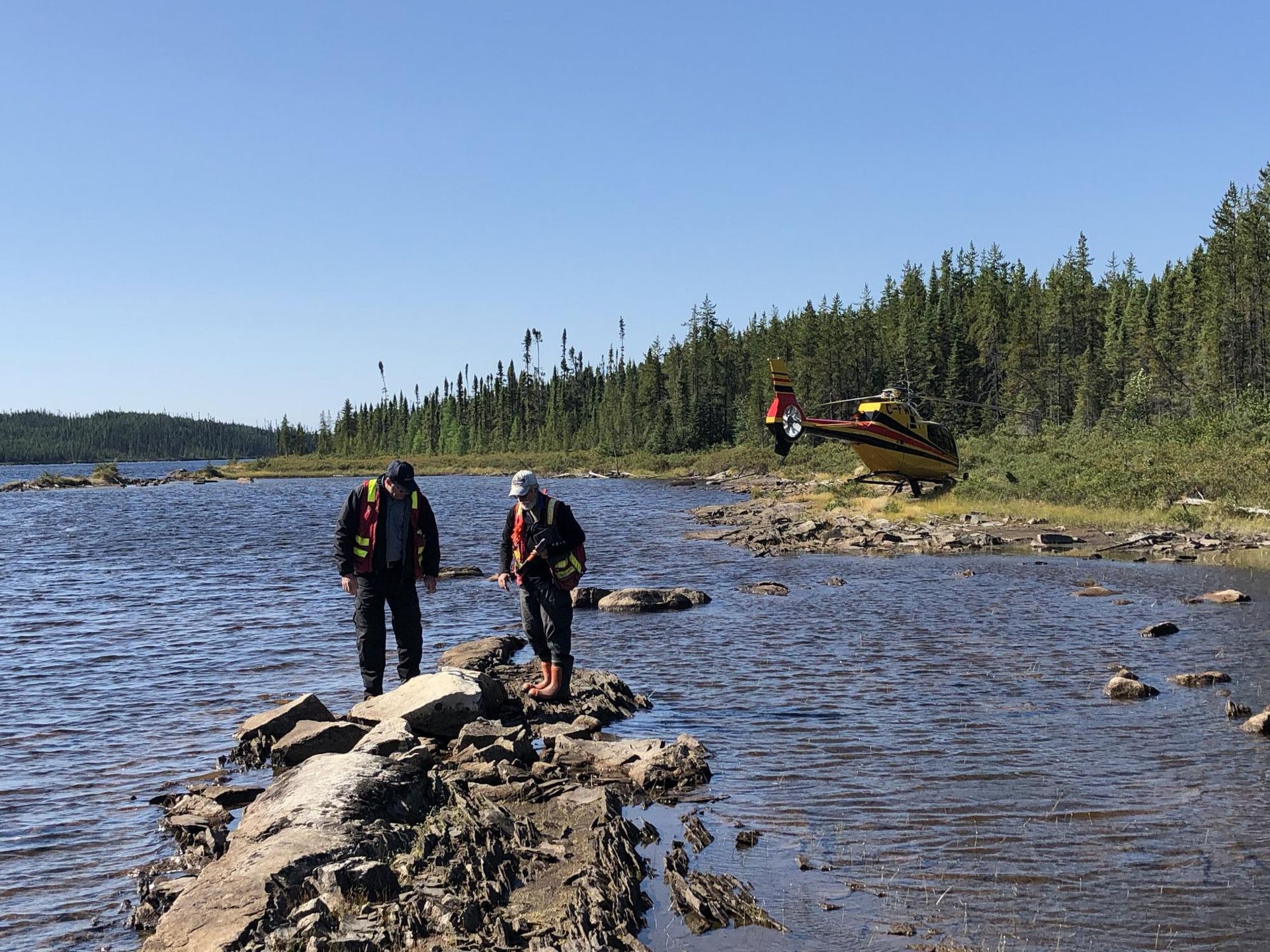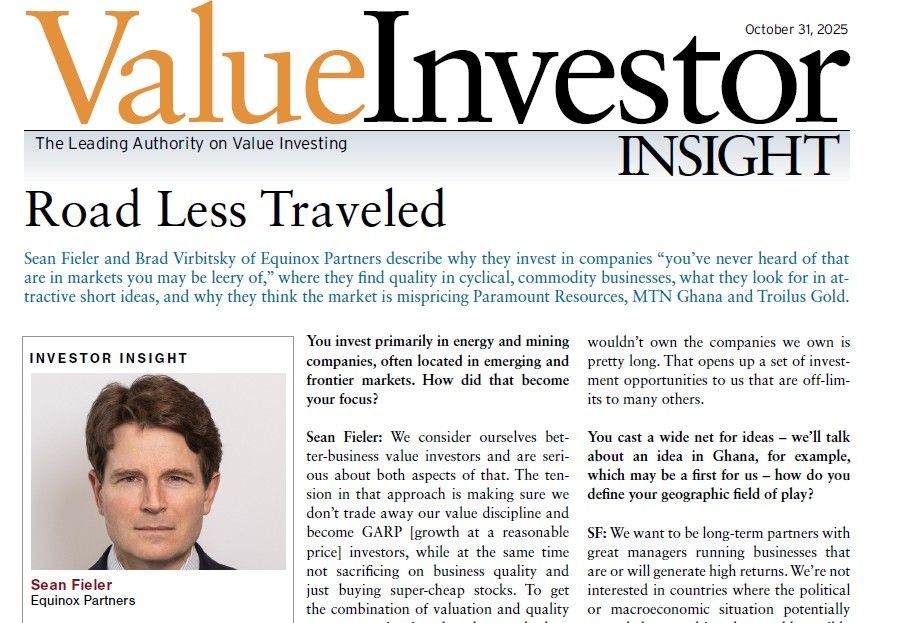Equinox Partners, L.P. - Q2 2022 Letter
Dear Partners and Friends,
PERFORMANCE & PORTFOLIO
In the second quarter of 2022, Equinox Partners, L.P. declined -13.3%. For the year to date through June 30th, the fund gained +14.9%. The fund’s second-quarter pullback was driven by a selloff in both E&P and precious metals mining.
Visit our performance page to view the Equinox Partners, L.P. fund summary in more detail.[1]
oil in a recession
After peaking on June 8th, our E&P companies fell 35% in aggregate before bottoming on July 14th. This precipitous, five-week decline was driven by growing expectations of a recession. While the drop unsettled many E&P investors, long-term investors in the sector should keep the following ten points in mind:
- Low Long-Term Oil Price: The long-term WTI prices of $67 suggest that oil supply will grow more quickly than oil demand. Given global supply constraints, this implies an incredibly pessimistic view of global demand growth.
- Global Demand in a Recession: Historically, recessions have reduced oil demand in OECD countries but not in emerging markets. This distinction is more important than ever with emerging markets now accounting for roughly 60% percent of global oil demand and 80% of global oil demand growth.
- Strategic Petroleum Reserve: The U.S. has been supplying the market with 1mb/d from the SPR since March 31st. This unprecedented depletion of America’s SPR will end this fall and be reversed after the midterm elections.
- Government Hostility: The Biden administration’s regulatory hostility towards the E&P sector continues to weigh on new upstream supply in America.
- Capital Allocation: In the previous energy cycle, North American E&P companies invested 100%+ of annual cash flow back into new production and relentlessly drove down energy prices. Today, these same companies are reinvesting less than 50% of annual cash flow and returning the balance to shareholders.
- Long-Term Underinvestment: Since the sharp oil price declines of 2014, the global upstream oil industry has underinvested in capacity. This underinvestment which was initially due to lower oil prices has been prolonged by ESG and shareholder pressure to return capital.
- OPEC: Since its founding in 1960, OPEC has generally sought to smooth fluctuations in the global oil market when excess capacity was modest. With only 2.5 mb/d of spare capacity, OPEC is more than capable of stabilizing the market if they so choose.
- Petro Dollar Demise: In the mid-1970s, a number of oil exporters agreed to sell their oil in US dollars. These agreements, which have helped contain the oil price in dollar terms, are losing their force in an increasingly multipolar world as evidenced by recent transactions in yuan and rubles.
- Russia: The market-share dispute between Russia and Saudi in 2020 was both unprecedented and unlikely to reoccur.
- Valuation: Our E&P companies are generating ~20%+ FCF yield on the one-year futures strip.
In our opinion, despite the pullback in the oil price and shares of E&P companies, the long-term, positive fundamentals of the oil industry remain in place. We expect upstream supply response to remain muted, global demand for oil to continue to grow, and our companies to continue to produce enormous amounts of free-cash-flow.
the scourge of misaligned DIRECTORS
Based on years of active engagement with the directors of public companies, we’ve adopted a strict policy of voting against directors who have served for two or more years but have invested less than two years of director’s fees into the company’s stock. In our opinion, shareholders should not support directors who lack meaningful financial alignment with the companies for which they bear ultimate governing responsibility. We estimate that this policy will result in our voting against approximately 10% of the board-slate candidates in next year’s proxy season.
Adopting a clear, lower-bound for director share ownership is the best way to push back on the growing indifference of boards to non-executive-director stock ownership and the decision of some companies to prohibit non-executive directors from owning stock all together. Amazing as it sounds, a handful of companies restrict their non-executive directors from owning shares in the companies they oversee. These high-minded prohibitions on share ownership are intended to ensure that non-executive directors are unbiased in their representation of all stakeholders in a given company. Lest you think we are making this up, we offer Gold Fields—the fifth largest gold producer in the world—as a case in point.
The Gold Fields board has adopted a policy of prohibiting its non-executive directors from owning the company’s stock. The logic of this policy is derived from a governance report named after Mervyn King, a former judge of the Supreme Court of South Africa. The fourth iteration of this governance report, the King IV Report published in 2016, makes the case that independent directors must represent all stakeholders, not just shareholders: “…[I]nstead of prioritizing the interests of the providers of financial capital, the governing body gives parity to all sources of value creation, including among others, social and relationship capital as embodied by stakeholders”. Given this need to represent all stakeholders, aligning directors’ financial interests with shareholders creates an undesirable bias in their decision making. In effect, the King IV Report sees non-executive directors as a priesthood serving a higher cause. To perform their duties properly, directors must be freed from a worldly profit motivation.
To be fair, Gold Fields’ non-executive directors are an impressive lot. They hold advanced degrees from elite universities. They have studied mine engineering and geology. They’ve run telecom companies and investment banking practices. They have served in a variety of prestigious academic and government capacities. And, we can be sure they are steeped in the latest and best research on good governance. The company’s website proudly touts its board’s qualification to steward a complex enterprise like Goldfields.
As impressive and diverse a group as they are, Gold Fields non-executive directors all share one important trait. They lack any financial alignment with the shareholders of Gold Fields.
Name: Shares Owned / Options Owned
Yunus Suleman: 0 / 0
Steven Reid: 0 / 0
Alhassan Andani: 0 / 0
Peter Bacchus: 0 / 0
Maria Christina Bitar: 0 / 0
Terence Goodlace: 0 / 0
Jacqueline McGill: 0 / 0
Philisiwe Sibiya: 0 / 0
Not surprisingly, it took only a few years for Gold Fields’ high-minded prohibition on non-executive-director share ownership to manifest itself in a decision that is particularly undesirable to shareholders. On May 31st of 2022, Gold Fields announced its bid to acquire Yamana Gold for $6.7b of Gold Fields stock. The deal has three obvious problems: 1) it offers shareholders no synergies; 2) it is dilutive to Gold Fields shareholders; 3) it triggers offensively large payouts to the management of Yamana. So, why would the Gold Fields board agree to such an obviously unattractive deal?
The board of Gold Fields offers six reasons for the acquisition of Yamana at a 34% premium: 1) Asset Quality; 2) Cash Flow Growth; 3) Jurisdiction Quality; 4) Pipeline; 5) Competitive Advantage; 6) ESG Commitment. Notably absent from the list is any mention of the value destructive premium the Goldfield’s board agreed to pay for Yamana. The reason Gold Fields doesn’t mention valuation is that the deal is dilutive on every measure imaginable. In our opinion, the math is so clear that this is a deal that could only be approved by a board that lacks meaningful financial alignment with the company’s owners.
This is not to say that the Gold Fields non-executive directors don’t stand to benefit from the deal. They will be directing a larger company with assets in more attractive jurisdictions. It is also true that the assets they are acquiring are more ESG friendly, and they are acquiring a pipeline of projects to finance and build in the future. So, as a board member that doesn’t own stock the deal is a painless opportunity to oversee a larger, better company. For the investment bankers and lawyers involved, it is also great—as all deals are. In fact, like most bad deals, this deal is great for just about everyone other than the actual owners of the company that is overpaying.
The market, to its credit, immediately sensed that the Gold Fields’ board had betrayed their shareholders. The shares of Gold Fields traded down a whopping 20% on the day of the announcement. This abrupt derating of Gold Fields shares in turn cut the premium to Yamana by more than two-thirds. The panicky behavior of both Gold Fields and Yamana since the announcement suggests that the deal may fail to win approval from the shareholders of either company. With the premium radically reduced, Yamana shareholders may reject a deal which would leave them saddled with a demonstrably misaligned Gold Fields board. The Gold Fields shareholders may reject this deal simply because it is value destructive.
We, happily, are not invested in either Gold Fields or Yamana. Moreover, no Canadian or Australian domiciled mining company has yet been crazy enough to adopt a prohibition on non-executive-director share ownership like the South African domiciled Gold Fields. That said, we’ve seen a troubling deemphasis of financial alignment amongst these mining companies as well. Since 2015, the insider ownership amongst the gold mining companies that make up the GDXJ index has fallen by 22%. The proximate cause of this decline is board turnover driven by passive investors. Unlike activists who propose specific directors, large passive mangers propose categories of directors rather than individuals. Corporate insiders have largely acquiesced to these demands by nominating new directors that fit the passive investors’ criteria but are unlikely to rock the boat.
One way in which boards have solved for docility when nominated new non-executive directors is by targeting minimal financial alignment with shareholders. By elevating individuals who do not own stock and are unlikely to acquire a significant financial interest in the company they oversee, the board is adding colleagues who will tend to prioritize collegiality and reputation over the company’s financial interests. Accordingly, the new directors tend to be highly credentialed, but also tend to be process rather than outcome oriented. In our opinion, these less-aligned directors will be a disaster over time for shareholders.
Lest gold mining companies complain that our bar is too high, we offer the Canadian E&P industry as an example of a more responsible approach to director alignment. It is common for Canadian E&P companies to mandate that board members own at least three years of directors’ compensation in stock. Not coincidentally, the Canadian E&P industry has turned into a sector which prioritizes returns on and of owners’ capital. Here’s an example from Crew Energy’s proxy:
“Each non-management director is required to own and maintain, directly or indirectly, a minimum number of Common Shares having a value of not less than five (5) times the annual cash retainer payable to such directors for services rendered to the Corporation. Newly appointed directors and officers are given three (3) years to meet the guidelines. In the event that an individual who has achieved the target ownership level subsequently falls below such target ownership level due solely to a decline in the market price of our Common Shares, such individual will be considered to be in compliance with the ownership guidelines as long as the adjusted cost base of his or her Common Shares exceeds the target ownership level.”
Sincerely,
Equinox Partners Investment Management
[1] Sector exposures shown as a percentage of 6.30.22 pre-redemption AUM. Performance contribution is derived in U.S. dollars, gross of fees and fund expenses. Interest rate swaps notional value and P&L are included in Fixed Income. P&L on cash is excluded from the table as are market value exposures for derivatives. Unless otherwise noted, all company data is derived from internal analysis, company presentations, or Bloomberg. All values are as of 12.31.21 unless otherwise noted.
Endnote: Unless otherwise noted, all company-specific data derived from internal analysis, company presentations, Bloomberg, or independent sources. Values as of 6.30.22, unless otherwise noted.
This document is not an offer to sell or the solicitation of an offer to buy interests in any product and is being provided for informational purposes only and should not be relied upon as legal, tax or investment advice. An offering of interests will be made only by means of a confidential private offering memorandum and only to qualified investors in jurisdictions where permitted by law.
An investment is speculative and involves a high degree of risk. There is no secondary market for the investor’s interests and none is expected to develop and there may be restrictions on transferring interests. The Investment Advisor has total trading authority. Performance results are net of fees and expenses and reflect the reinvestment of dividends, interest and other earnings.
Prior performance is not necessarily indicative of future results. Any investment in a fund involves the risk of loss. Performance can be volatile and an investor could lose all or a substantial portion of his or her investment.
The information presented herein is current only as of the particular dates specified for such information, and is subject to change in future periods without notice.
